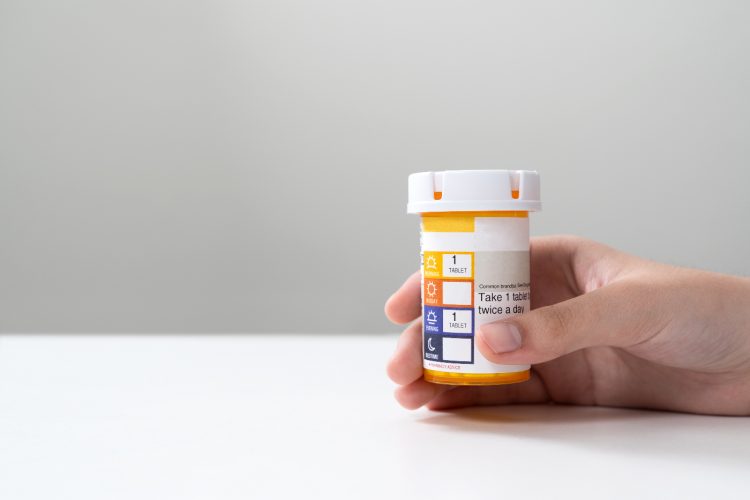Gabapentin, an anticonvulsant drug known for its role in managing neuropathic pain and seizures, is a subject of discussion not only for its therapeutic effects but also for its pharmacokinetics, the process by which the drug is absorbed, distributed, metabolized, and excreted. Understanding how long Gabapentin remains in the system is crucial for patients who are managing treatment schedules, anticipating potential side effects, or preparing for drug screenings in professional contexts. This guide provides a comprehensive look at various factors affecting the duration Gabapentin stays in the body, methods for its detection, and the implications of its presence in your system.
What Is Gabapentin?
Gabapentin, a structural analog of the neurotransmitter gamma-aminobutyric acid (GABA), although it does not directly influence GABA receptors, it modifies the activity of the neurons, contributing to its anticonvulsant and analgesic effects. This medication is commonly prescribed for neurological conditions that involve nerve pain or convulsions, making it a critical component in the treatment regimes of many patients suffering from chronic conditions.
Medical Uses of Gabapentin
Gabapentin’s approval for medical use includes treatments for neuropathic pain associated with herpes zoster (shingles), partial onset seizures, and, as an off-label use, for conditions such as fibromyalgia. It is praised for its ability to treat a wide range of pain-related symptoms and disorders, often being utilized in cases where traditional painkillers are ineffective.
How Gabapentin Works in the Body
Gabapentin primarily impacts nerve communication in the brain, modifying how pain and seizure signals are transmitted. Although it resembles the neurotransmitter GABA, Gabapentin does not directly interact with GABA receptors. Instead, it targets calcium channels on nerve cells, reducing calcium influx when neurons are activated. This action decreases the release of neurotransmitters like glutamate and norepinephrine, which are involved in pain and seizure activities.
By limiting the entry of calcium into neurons, Gabapentin reduces nerve excitability, helping to stabilize brain electrical activity and prevent the rapid firing that leads to seizures. For pain management, it diminishes the intensity of pain signals sent to the brain, providing relief from conditions like neuropathic pain. This dual action makes Gabapentin effective in treating both nerve-related pain and epileptic seizures, enhancing its therapeutic utility in various neurological disorders.
Factors Influencing How Long Gabapentin Stays in Your System
Dosage and Frequency
The pharmacokinetics of Gabapentin are dose-dependent. Regular, high doses can lead to the drug accumulating in the body’s tissues, which may extend the duration it remains detectable. Adhering to the prescribed dosage and timing can mitigate unexpected accumulations and help maintain a stable therapeutic level of the drug in the bloodstream.
Metabolism and Health Conditions
Individual metabolic rates, which can vary widely among people, affect how quickly Gabapentin is processed in the liver and excreted by the kidneys. Those with renal impairment may experience a slower clearance rate, necessitating adjustments in dosage to prevent potential toxicity.
Interaction with Other Medications
The use of Gabapentin alongside other medications can influence its metabolic rate. Drugs that induce liver enzymes may accelerate the metabolism of Gabapentin, reducing its efficacy and necessitating a dosage adjustment.
Detection Times
Blood Tests
Gabapentin can be traced in blood samples taken within 48 hours of the last dose, providing a reliable but short window for detection, particularly relevant in acute medical settings.
Urine Tests
The presence of Gabapentin in urine can be detected for about three days, making urine tests a common choice for compliance monitoring in both clinical and legal scenarios.
Saliva and Hair Follicle Tests
Saliva tests can detect Gabapentin shortly after consumption, whereas hair follicle tests provide a historical record of use, reflecting usage up to three months prior, which is useful in detailed forensic or compliance examinations.
Effects of Gabapentin on the Body
Short-term Effects
Commonly, users may experience side effects like dizziness, drowsiness, and fatigue shortly after taking Gabapentin. These effects can impact daily activities, particularly those that require alertness such as driving or operating machinery.
Long-term Effects
Prolonged use of Gabapentin may lead to tolerance, necessitating higher doses to achieve the same therapeutic effect, and potentially leading to dependence. Patients should be monitored regularly for signs of cognitive impairment, mood changes, or physical health decline.
Why Knowing the Duration of Gabapentin in Your System Matters
Patients need to understand how long Gabapentin stays active to manage dosing schedules effectively, avoid interactions with other medications, and prepare for situations where drug testing might occur, such as employment screenings or legal investigations.
Managing Gabapentin Intake
It is paramount for patients to adhere to prescribed guidelines concerning Gabapentin intake to avoid adverse effects and ensure the medication’s efficacy. Regular consultations with healthcare providers are recommended to tailor the treatment to the patient’s specific needs.
When to Seek Help
Awareness of the signs of Gabapentin overdose and dependency is essential for timely medical intervention. Symptoms such as significant drowsiness, confusion, and slurred speech warrant immediate medical attention.
The Importance of Professional Gabapentin Detox
When discontinuing Gabapentin, especially after long-term use, professional detoxification is crucial to manage withdrawal safely and effectively. Gabapentin can cause physical dependence, and its cessation might lead to withdrawal symptoms that are both uncomfortable and potentially harmful. Here are several reasons why professional detox is important:
Medical Supervision
Professional detox provides continuous medical supervision, ensuring that any adverse effects or complications are promptly addressed. Medical professionals can monitor vital signs, manage withdrawal symptoms, and adjust treatment protocols as needed to ensure the patient’s safety.
Withdrawal Symptom Management
Gabapentin withdrawal can include symptoms such as anxiety, insomnia, nausea, pain, and sweating. In severe cases, patients might experience more intense symptoms like seizures. Professional detox programs can offer medication-assisted treatment to alleviate these symptoms and reduce the risk of seizure, making the withdrawal process more comfortable and safer.
Structured Environment
Detox facilities offer a structured environment that can help individuals avoid the temptation to relapse. The controlled setting minimizes stressors and triggers that might lead to a setback, providing a supportive space conducive to recovery.
Tailored Treatment Plans
Each individual’s response to Gabapentin withdrawal can vary based on the duration of use, dosage, and personal health history. Professional detox centers assess these factors to create personalized treatment plans that address specific needs, improving the overall effectiveness of the detox process.
Psychological Support
Detoxing from Gabapentin is not only a physical challenge but also a psychological one. Professional detox programs often include psychological support and counseling to help individuals understand the emotional aspects of withdrawal and addiction. This support is crucial for mental health and long-term recovery, offering strategies to manage cravings and cope with the stress of detox.
Preparation for Long-term Recovery
Professional detox is often the first step in a comprehensive addiction treatment program. By effectively managing the initial withdrawal phase, detox sets a solid foundation for ongoing therapy and recovery efforts, such as behavioral therapy, support groups, and rehabilitation programs.
Getting Help
Gabapentin serves as an important medication in the treatment of neuropathic pain and epilepsy, with its effectiveness highly dependent on appropriate dosage and administration. Patients and caregivers must be informed about how the drug works and its potential effects over both short and long terms so that they can use it safely and effectively.
If you or a loved one is struggling with Gabapentin addiction, get in touch with True Self Recovery to learn more about our detox and addiction treatment programs.
FAQs
What is the safest way to stop taking Gabapentin?
The safest method to discontinue Gabapentin involves a gradual tapering of the dose under medical supervision to minimize withdrawal symptoms and prevent the resurgence of the underlying condition.
How does Gabapentin's interaction with other drugs affect its stay in the body?
Drug interactions can significantly alter the effective concentration of Gabapentin in the bloodstream, either by enhancing its excretion or by competing for metabolic pathways, which could either diminish its effects or increase potential toxicity.
Can you speed up the process of eliminating Gabapentin from your system?
While specific methods to accelerate the elimination of Gabapentin are limited, maintaining optimal hydration and overall health can support the body’s natural detoxification processes. However, any attempt to alter the drug’s kinetics should be managed by a healthcare professional.
What are the risks of long-term Gabapentin use?
Long-term risks include the potential for addiction, withdrawal symptoms upon cessation, and possible long-lasting effects on cognitive function and mental health. Regular medical reviews are essential to manage these risks effectively.
Is Gabapentin Addictive?
Gabapentin is not traditionally addictive as it does not usually produce euphoria or compulsive drug-seeking behavior. However, it can lead to physical dependence, particularly with prolonged use or high doses. Dependence means the body adapts to the drug, potentially causing withdrawal symptoms if usage is abruptly stopped. While Gabapentin has a lower abuse potential than many pain management drugs, misuse can still heighten the risk of dependence, especially in individuals with a history of substance abuse. It is crucial to use Gabapentin under medical supervision and strictly adhere to prescribed guidelines to minimize any risks. If you or a loved one are battling with gabapentin abuse, get in touch with a medical professional.
How can you avoid Gabapentin dependency?
Dependency can be avoided by using Gabapentin strictly according to the prescription and under continuous medical supervision, particularly when used for long periods or in high doses. Regular assessments can help adapt the treatment plan as necessary to minimize dependency risks.



